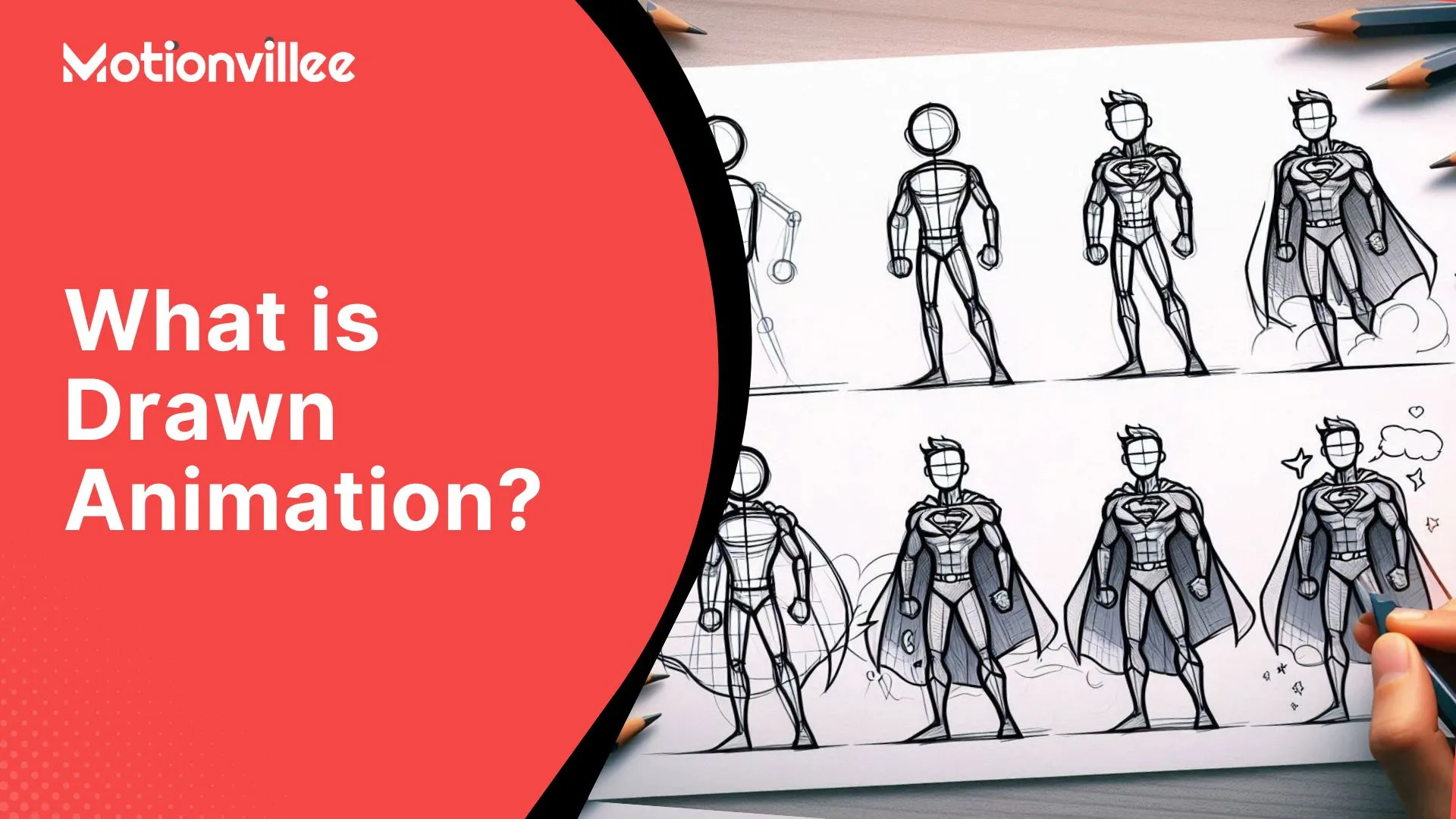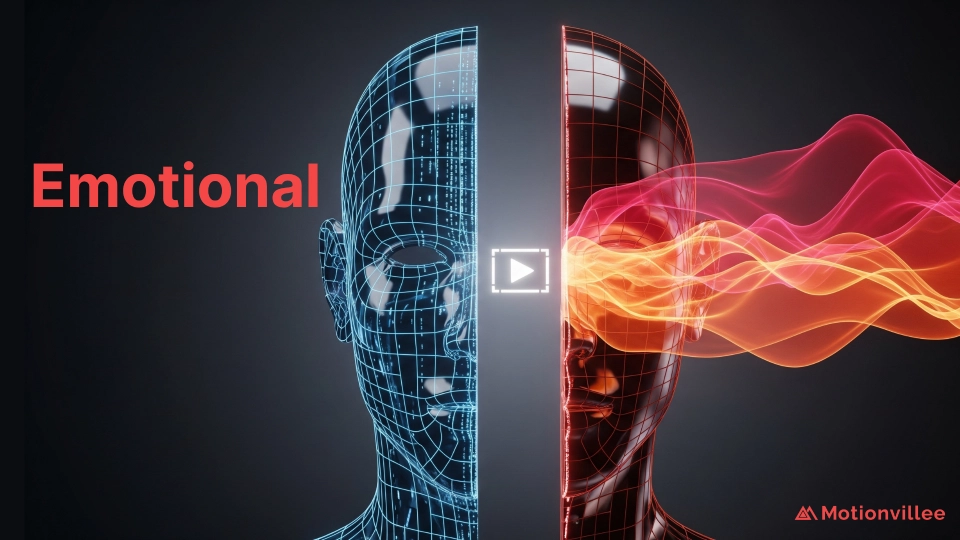Drawn animation, also known as traditional or hand-drawn animation, is an art form where each frame is meticulously crafted by hand. This technique, one of the oldest in the realm of animation, has a storied history that has profoundly influenced cinema and visual storytelling. From the early days of simple sketches to the breathtakingly detailed works of modern times, drawn animation remains a beloved and respected medium.
In this blog, we’ll explore the fascinating history of drawn animation, define its key techniques, and highlight some of the best-drawn animated videos ever created. Additionally, we’ll provide a guide on how you can create your own drawn animations, offering a glimpse into the process that brings these beautiful works of art to life.
What Is Drawn Animation?
Drawn animation involves creating a sequence of images, each slightly different from the last, to produce the illusion of movement when played in rapid succession. Traditional animation typically uses 24 frames per second, meaning that animators must create 24 individual drawings for each second of film.
There are several techniques within drawn animation, including:
- Cel Animation: Cel animation involves drawing characters and objects on transparent sheets called cels. These cels are then placed over a static background and photographed frame by frame. This technique allows for more efficient and flexible animation production.
- Stop-Motion Animation: While not exclusively a drawn animation technique, stop-motion involves photographing objects or drawings frame by frame to create the illusion of movement. This method was used in early animation and continues to be popular in various forms.
- Flipbook Animation: Flipbook animation is one of the simplest forms of drawn animation. It involves drawing a series of images on the pages of a book, which are then flipped rapidly to create the illusion of motion.
- Rotoscoping: Rotoscoping involves tracing over live-action footage to create realistic movement. This technique was pioneered by Max Fleischer in the 1910s and has been used in films like “Snow White and the Seven Dwarfs” and “A Scanner Darkly” (2006).
How to Use Drawn Animation
Creating your own drawn animation can be a rewarding and creative endeavour. Here are the basic steps to get started:
- Concept and Storyboarding: Begin with a clear concept and create a storyboard to outline your animation. A storyboard is a series of sketches that represent the sequence of events in your animation. It helps plan the action and timing of each scene.
- Drawing the Frames: Draw each frame of your animation. If you’re using cel animation, draw characters and objects on separate cels to layer them over the background. For flipbook animation, draw each image on consecutive pages of a small book.
- Inking and Coloring: Once the frames are drawn, ink them to create clean lines. Coloring can be done by hand or digitally, depending on your preferred method. Cel animation often involves painting on the reverse side of the cels to maintain crisp lines on the front.
- Photographing or Scanning: If you’re working with physical drawings, photograph or scan each frame. Ensure that each frame is aligned consistently to maintain smooth movement in the final animation.
- Animating the Frames: Use animation software to compile the frames and create the final animation. Software like Adobe Animate, Toon Boom Harmony, or even free tools like Pencil2D can help you assemble your frames, adjust timing, and add effects.
- Adding Sound and Music: Sound effects and music can enhance your animation. Use audio editing software to synchronize sound with your animation and create a more immersive experience.
- Editing and Finalizing: Edit your animation to ensure smooth transitions and consistent pacing. Make any necessary adjustments to improve the flow of the animation. Once you’re satisfied, export the final version in a suitable format for sharing or presentation.
Best Drawn Animated Videos
Drawn animation has produced many timeless classics that have captivated audiences for generations. Here are some of the best-drawn animated films:
Snow White and the Seven Dwarfs (1937)
This Disney classic is the first full-length cel-animated feature film. It tells the story of Snow White, a princess who befriends seven dwarfs while fleeing from her wicked stepmother, the Queen. The film’s groundbreaking animation and storytelling set a high standard for future animated films.
The Lion King (1994)
Another Disney masterpiece, “The Lion King” is a tale of a young lion named Simba who must reclaim his kingdom from his uncle Scar. The film’s stunning animation, memorable characters, and powerful music have made it a beloved classic.
Spirited Away (2001)
Directed by Hayao Miyazaki and produced by Studio Ghibli, “Spirited Away” is a Japanese animated fantasy film about a young girl named Chihiro who becomes trapped in a mysterious and magical world. The film’s imaginative storytelling and beautiful hand-drawn animation have earned it critical acclaim worldwide.
Beauty and the Beast (1991)
This Disney film tells the story of Belle, a young woman who falls in love with a cursed prince turned beast. “Beauty and the Beast” was the first animated film to be nominated for the Academy Award for Best Picture and is celebrated for its lush animation and memorable music.
Akira (1988)
“Akira” is a Japanese animated cyberpunk film directed by Katsuhiro Otomo. Set in a dystopian future, it follows the story of a teenage biker with psychic powers. The film’s detailed animation and complex narrative have made it a cult classic.
My Neighbor Totoro (1988)
Another gem from Studio Ghibli, “My Neighbor Totoro” is a heartwarming tale of two young sisters who befriend a giant, friendly forest spirit named Totoro. The film’s gentle storytelling and charming animation have made it a favourite among audiences of all ages.
Conclusion
Drawn animation is a timeless art form that has captivated audiences for over a century. From its early beginnings to its golden age and beyond, this technique has produced some of the most beloved and iconic films in cinema history.
By understanding the techniques, and notable examples of drawn animation, you can appreciate the artistry behind these works and even create your own animated masterpieces. Whether you’re an aspiring animator or simply a fan of animated films, the world of drawn animation offers endless possibilities for creativity and storytelling.







